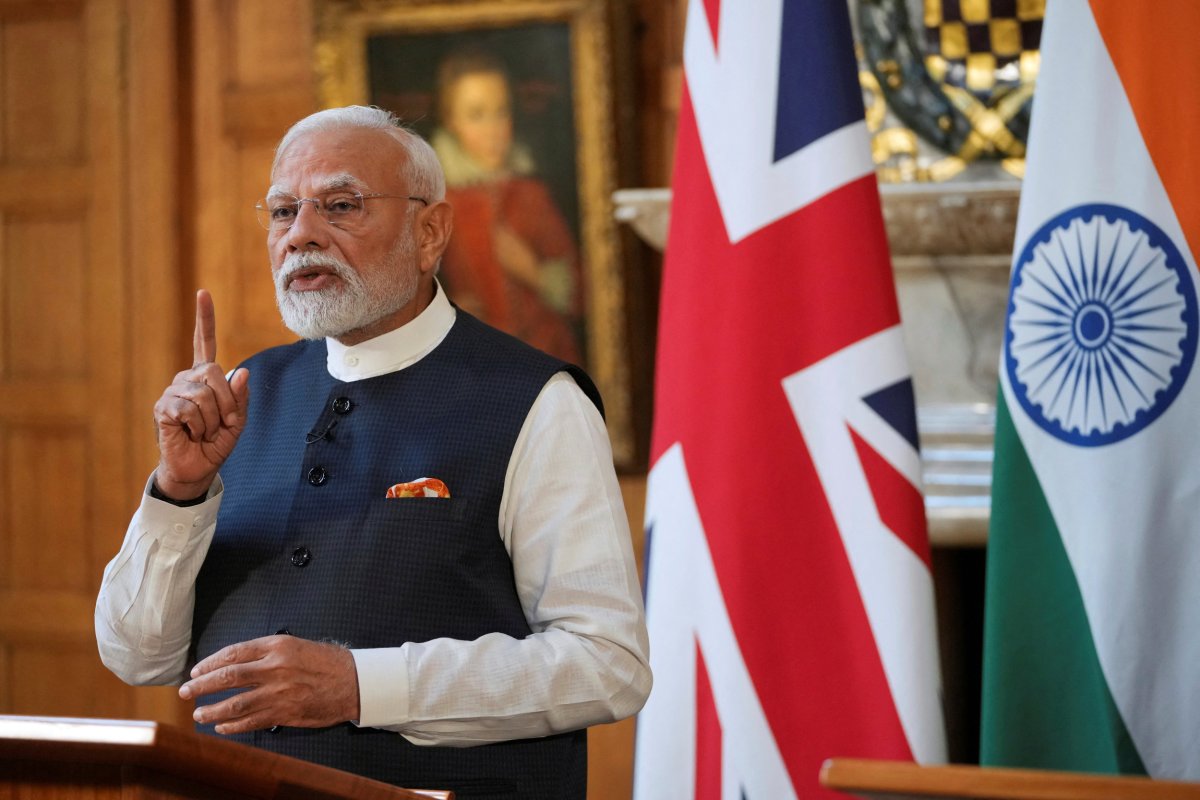-
Phillies vs. Yankees Highlights | MLB on FOX - 8 mins ago
-
Rams’ Sean McVay Drops Concerning Matthew Stafford Injury Update - 18 mins ago
-
Johnny Depp joins Alice Cooper on stage for surprise Ozzy Osbourne tribute - 46 mins ago
-
Inter Miami CF vs. FC Cincinnati Highlights | MLS | FOX Soccer - 51 mins ago
-
Landlord Who Killed Palestinian Boy in Hate Crime Dies in Prison - 57 mins ago
-
Another AutoZone broken into near South L.A. street takeover, police say - 2 hours ago
-
Angel Reese Sends Clear Message to WNBA About Salary Negotiations - 2 hours ago
-
Bobby Witt crushes two-run homer, cutting Royals' deficit vs. Guardians - 2 hours ago
-
NY Giants Wide Receivers Open Up on Russell Wilson’s Impact - 2 hours ago
-
Steven Kwan hits a two-run homerun to extend the Guardians' lead over the Royals - 2 hours ago
India’s New Deals Leave US to Catch Up
On a sweltering afternoon beside the turquoise waters of the Indian Ocean, Prime Minister Narendra Modi stood beside Maldivian President Mohamed Muizzu for the island nation’s 60th birthday.
It was not only ceremonial, however. Three agreements and four memorandums of understanding were signed with a country that had once been seen as inching into China’s orbit.
Days earlier and at a different place on the diplomatic scale, Modi had inked a new trade agreement with former colonial power Britian — calling it “a blueprint for our shared prosperity.”
But as the world’s most populous nation forges a new global diplomatic playbook, one country appears conspicuously left out and with a trade deal still hanging in the balance: the United States.
“We wish to engage with the world, including the West, on equal terms,” Sanjeev Sanyal, a key member of Indian Prime Minister Modi’s Economic Advisory Council told Newsweek. “We understand that Western countries have their interests, but we also have ours. So, we will speak up for our interests. This does not mean that we won’t be willing to engage or make reasonable trade-offs.”
Photo by Mohamed Afrah / AFP
A U.S. State Department spokesperson described India as “a strategic partner with whom we engage in full and frank dialogue, including on its relationship with Russia and problematic actions by China.”
“We deeply value our relationships with fellow Indo-Pacific nations like India and Maldives. We will continue to work with our partners to advance American interests by ensuring the region remains free and open, and continues to become more connected, prosperous, secure, and resilient,” the spokesperson said.
White House
In a sign of India’s importance for U.S. President Donald Trump’s administration, he was an early visitor to the White House in the second Trump term.
But the optics of India’s recent diplomatic activity are hard to ignore. India’s diplomatic calendar this month reads like a G20 cheat sheet: France, UAE, Egypt, Iran, Russia — now Britain and the Maldives.
And in a move that would have been unthinkable even a year ago, India just resumed offering tourist visas for Chinese citizens, ending a five-year freeze following deadly clashes in a disputed border area in 2020.
“China and India should adhere to the direction of good neighborliness and friendship,” Chinese Foreign Minister Wang Yi said during a July 15 meeting with Indian counterpart S. Jaishankar. “China is willing to work with India to promote sustained, healthy, and steady development,” he added.
These moves reflect India’s deepening role as a global swing power, geopolitical analysts said.
“Power—not justice, not fairness, not laws, rules, or ethics—but raw, unadulterated, crude and unhinged power has become the key determinant of international relations,” Gautam Chikermane, Vice President at Observer Research Foundation told Newsweek. “Threats have become the new vocabulary, whims are the new rules. Every country must have Plan B and Plan C in place. India already does.”

Photo by KIN CHEUNG/POOL/AFP via Getty Images
Landmark Deal with Britain
India’s landmark deal with the UK is seen as much about geopolitics as about goods and services. It wasn’t rushed. Negotiations began in May 2022, took three years, and involved tough domestic balancing acts—protecting farmers, small businesses, and service sectors on both sides.
“It is not easy to sign a trade agreement like this,” said one senior Indian trade official involved in the deal. “But both sides were patient. We weren’t desperate, and we didn’t take ultimatums.”
“This agreement is more than just trade,” UK opposition Conservative MP Bob Blackman told Newsweek. “It reflects a shift in how both nations perceive power and partnership. No longer limited to Commonwealth nostalgia, the UK–India relationship is maturing—grounded in democratic resilience and pragmatic alignment.”
In contrast, there is still no trade deal with the United States despite some optimism voiced by President Trump and India.
“The United States is very close to a trade deal with India… I think we’ll get it done soon,” Trump said at a recent press briefing. Yet, almost in the same breath, he reiterated his frustration with India’s trade stance, immigration policies, and neutrality on Russia.
“The era of building factories in China and hiring workers in India is over,” Trump added—comments that have left New Delhi watching with a wary eye.
Trump has also threatened secondary tariffs of up to 100% on countries importing Russian oil—a clear warning to India, which continues buying discounted energy from Moscow in what it sees as a vital economic hedge, not a geopolitical endorsement.
“India’s successful trade deal with the UK demonstrates that it has global trading options and that it is not desperate enough for a trade deal with the United States to open up its agricultural sector,” Lisa Curtis, director at the Center for a New American Security told Newsweek. “The Trump administration would be wise to make concessions for India in the interest of the larger strategic partnership.”
“One of the greatest foreign policy accomplishments of the first Trump administration was elevating the U.S.–India strategic partnership,” Curtis continued. “It would be a mistake for the second Trump administration to sacrifice those gains.”
Source link































